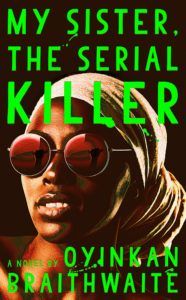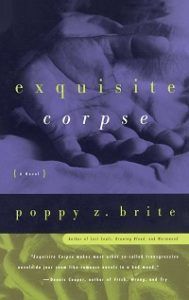Historically, the final girl in both the novel and cinematic worlds is the virginal white girl. She’s milk and honey personified, naive to a fault, and always in the wrong place at the wrong time. It isn’t until she says the final words of the spell, outsmarts the knife-wielding baddie, beats the devil, and lives that she is a real person. She is a testament to goodness and purity triumphing over wickedness and evil. As works of fiction evolve, so too will our final person. Will we see the woman serving as the one to throw herself on the proverbial grenade to save the man, or do battle with the evil house to save her husband and son whilst fending off the growing madness caused by an evil hotel? Settings, antagonists, and protagonists in popular stories are changing. In My Sister the Serial Killer by Oyinkan Braithwaite, for example, our story takes place in Nigeria rather than our standard white-centric backdrops like London or someplace in the USA. The antagonist is a beautiful woman of color and a black widow. She goes from relationship to relationship, and when things go stale or she finds herself faced with an imagined slight, the object of her affections meets a grisly end at the edge of a very big knife. Who does she call when the man of the week meets his end? Why, her sister of course. Who else will clean up the mess, and love her despite another accident? In an effort to completely sidestep spoilers, if the handsome Dr. Boyfriend survives he would by definition be our final man rather than final girl. Her sister is posed to become our hero rather than the dashing doctor at the hospital where our potential heroine works. In Poppy Z. Brite’s Exquisite Corpse our cast of characters are homosexual men, and in some instances HIV Positive. The ingenue is a young Vietnamese runaway who stumbles into the sights of our killers. One villain sees his slaying as a work of art. His partner in crime feels that by consuming his victims, these gentlemen will be with him always. Rather than your standard slasher trope we are presented with a complicated story about the desire to be loved, and the terror of AIDS and HIV. By the end of the story we get a final man who is queer, flawed, and, for some, deeply relatable. People seldom want to see the after. In movies we don’t want to see that Laurie Strode has become a paranoid shut in. We catch a glimpse of the after in Carrie, where our survivor is plagued with nightmares, grief, and guilt. Novels like Riley Sager’s Final Girls shows us the after with all of its scars and messy trust issues. We witness night terrors, alcoholism, kleptomania, and a slew of other pieces that paint a picture of a not so happily ever after. However, with these flawed characters we see that even in the horror of the ever after there is perseverance and hope. Life is seldom a series of sunshine and daisies, but we and our final person can learn to live for those moments. It will be interesting to see how the final girl trope grows and changes with the times. As queer authors and authors of color move more into the mainstream what will that final person look like? Who will we root for? As stories themselves evolve and change so too will our survivor. Our final person may well be a trans person, or queer person, or someone with deep-seated flaws rather than the naive virgin stumbling through events who survives the story.


